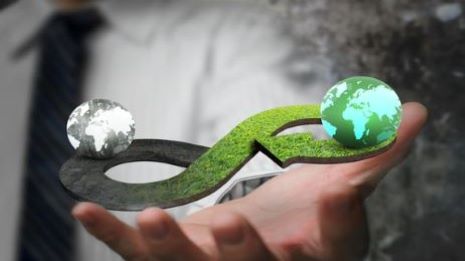- A ‘Circular Economy’ (CE) is an industrial system that aims to design out waste (‘restorative by design’)
- There is increasing momentum towards a formalised (CE) from linear (make-take- dispose), driven by a combination of natural resource depletion, environmental impact and scope for huge economic benefits
- Unlike most other “resource efficiency” sectors, a CE is not dependent on, but can be a major beneficiary of, new technologies
- Circular flows differ by type:
- biologic matter feeds back into the system through processes like composting and anaerobic digestion
- technical matter (products, components, materials) is recovered and restored through strategies like reuse, repair, remanufacture, recycling …
- The CE will impact all major global industrial & service sectors; with different drivers, currently greatest application is being pursued in food, plastics, construction, textiles and scarce raw materials
- The EU has taken the lead on the Circular Economy (the EC began implementation of its Circular Economy Action Plan in 2015); in the EU annual material cost savings alone can be worth US$340bn-US$630bn pa
- Investment in the CE is set to explode: ~€100bn annually in the EU CE over 2017-2025(1), of which ~€35bn on “next-wave” CE themes
- The CE provides huge scope for innovation (by new and incumbent actors) in business models and supply chains, often with data-driven strategies

